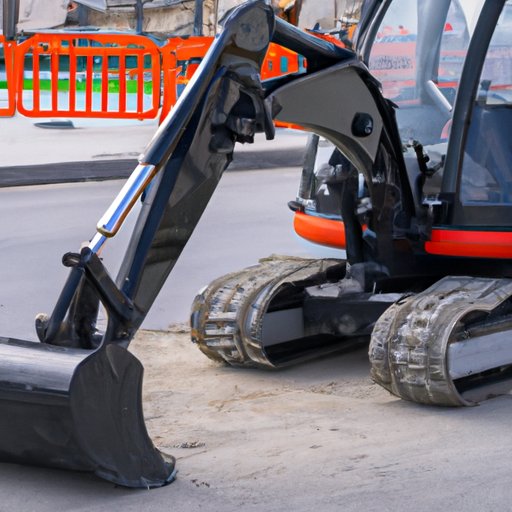A Beginner’s Guide to Skid Steers: Everything You Need to Know about These Versatile Machines
Have you ever wondered what a skid steer is and what it does? If you are new to the world of construction, chances are you have heard the term but may not be very familiar with this versatile machine. Skid steers are commonly used in construction projects, mining, landscaping, and agriculture. In this article, we will take an in-depth look at skid steers, discussing their history, components, features, and how to choose the right one for your project.
Defining Skid Steers
What is a skid steer? A skid steer is a type of compact construction equipment that is used for digging, grading, and a wide range of other tasks. They are small, agile, and versatile machines that are designed for use in tight spaces. The name “skid steer” refers to how the machine turns. Instead of using a traditional steering wheel or joystick, skid steers have two sets of wheels that rotate in opposite directions, allowing the operator to turn the machine by slowing one set of wheels down.

The Origin and History of Skid Steers
Skid steers were first invented by a Minnesota-based company called Melroe Manufacturing in 1957. The company’s patented invention, the “Bobcat,” was initially designed for use by farmers for cleaning animal waste. Eventually, demand for the versatile machine grew, and it was used for a wide variety of other tasks, including construction work.
The Basic Components and Features of Skid Steers
Skid steers consist of a few basic components, including a chassis, engine, hydraulic system, and a loader arm with a bucket attachment. The loader arm is mounted on the chassis, and the engine powers the hydraulic system, which lifts and lowers the arm and bucket. Skid steers are designed for use with a wide range of attachments, including backhoes, grapple buckets, rock breakers, and augers. They can also be fitted with tracks instead of wheels, which makes them better suited for use in harsh terrain or urban environments.
The Benefits of Using Skid Steers in Construction Projects
Skid steers have several benefits that make them a popular choice for construction projects. They are small and agile, which makes them ideal for use in tight spaces. Also, they are easy to maneuver, which helps operators work quickly and efficiently. Skid steers can also be fitted with a wide range of attachments, which allows them to be used for different tasks on a worksite without the need for multiple machines. All in all, skid steers help to reduce time and labor costs and improve worksite safety.
Skid Steers: The Swiss Army Knife of Construction Equipment
Skid steers are often referred to as the Swiss Army Knife of construction equipment because they are versatile and can be used for different tasks. They can be fitted with attachments like sweepers, rollers, and mowers, which makes them useful for landscaping work. They can also be used for concrete removal, demolition work, and other heavy-duty construction tasks. In short, skid steers are an invaluable asset for any construction company.
Exploring the Different Types of Skid Steers and Their Uses
Skid steers come in different types, each with its own features and uses. There are wheeled skid steers and tracked skid steers. Wheeled skid steers are best suited for use on flat or slightly uneven terrain, while tracked skid steers are more suitable for use in harsh or sloping terrain. Other types of skid steers include mini skid steers, small skid steers, and large skid steers, which differ in size, power, and capacity.
Understanding the Pros and Cons of Skid Steers
Like any other type of construction equipment, skid steers have their pros and cons. Some of the advantages of skid steers include their versatility, efficiency, and versatility, while some of the drawbacks include their size and weight limitations and maintenance costs. When choosing a skid steer, it’s essential to think about your project’s specific needs and compare your options to find one that will work best for your project.
Operational Tips for Running a Skid Steer
Running a skid steer is not very complicated, but it does require some training and precautions. Before operating the machine, always make sure to read the manual and understand the safety guidelines. Some best practices for running a skid steer include conducting daily inspections, maintaining the machine, using proper attachments, and avoiding overloading. When operating the machine, always wear appropriate safety gear, and never leave the machine unattended while it is running.
Skid Steers vs. Mini Excavators: Which Machine Is Right for Your Project?
While skid steers are versatile machines, they are not always the best option for every task. For projects that require more heavy-duty excavation work, a mini excavator may be more suitable. Mini excavators are designed specifically for digging work, while skid steers are better suited for tasks that require more maneuverability. When choosing between the two machines, consider your project’s specific needs and seek expert advice.
How Skid Steer Technology Is Evolving to Meet the Demands of Modern Construction
Skid steer technology is evolving rapidly to meet the demands of modern construction projects. Manufacturers are developing attachments and tools that make these machines even more versatile and practical. There are also advancements in telematics and onboard software that help operators monitor machine health and usage, predict maintenance needs, and optimize performance. All these developments are helping to improve the efficiency, safety, and versatility of skid steers for different construction applications.
Conclusion
Skid steers are an essential asset for any construction project, no matter the size or scope. These versatile machines can be used for digging, grading, demolition, and other tasks, making them an invaluable addition to any worksite. When choosing a skid steer, consider your project’s specific requirements, and seek expert advice to find the right machine for your needs.
